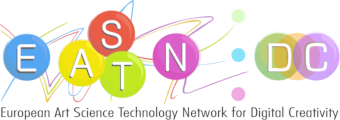Summary
The paper presents a theoretical research that aims to create a research framework for the integration of the term "randomness" as it appears in everyday life, in interaction with the sense of the “uncanny”, as it was described by the father of the psychoanalytic theory Sigmund Freud.
Objective
The general context of the research is defined by two basic components: the concept of randomness as perceived by man when confronted with random events in real life, and the connection between the sense random events exude, with the concept of the uncanny.
More specifically, the uncanny conveys the meaning of the foreign, the strange, the uncertain but its peculiarity consists in its direct connection with a familiar feeling of an old, but well-hidden experience. Randomness conveys the same feeling: its existence usually can’t be rationally attributed and creates the feeling of something strange, foreign, and bizarre. Moreover, coincidence, for the subject who is confronted with it, usually evokes an uncanny feeling, often leading to doubts about his rational beliefs. It is a paradoxical experience, especially when the random event is accompanied by the element of repetition. However, being very similar to the uncanny, it also contains a familiar feeling, like something that was known and hidden is gradually coming to light.
It is possible that the factor of randomness will not be universally accepted as a source of uncanny. However, my observations give me the certainty that under certain circumstances and in combination with certain conditions of the ego, it can actually cause such a feeling, which becomes even more intense when the element of repetition appears, a condition that can cause a very strong uncanny feeling.
With this premise as a starting point, two main research questions arise: Is the factor of randomness universally accepted and if yes to what extent? How the repetition of a random event does enhance the sense of uncanny?
The main objectives can be summarized as follows:
• the study of randomness as it is perceived by man in his daily life as well as the feeling that accompanies its occurrence and/or repetition
• the study of the uncanny as described by Freud and the feeling that accompanies its occurrence when a person is confronted with it in his daily life
• the connection, the similarities and the differences of these two terms as well as the comparison of the feelings they exude.
Method
The methodology of the proposed research provides the study of a carefully selected theoretical background related to randomness, seen in the light of Freud's psychoanalytic theory as described in his essay entitled the uncanny. This theoretical study and elaboration of the material, aims to investigate the dynamics of the term randomness in an attempt to find its connection with the term uncanny and its inclusion in the specific conceptual framework for its subsequent use and better future application in the field of arts.
More specifically the study of this theoretical research includes:
• the context through which we perceive randomness in everyday life
• the context through which unfamiliar feelings are created in us
• the connection and the deviation of the two terms
• the repeatability of a random event as a cause of uncanny emotions
• the uncanny and the animism
• Coincidence: is it a recurrence of accidental events or a fatal and inevitable event?
• Causal analysis and drawing conclusions arising from the theoretical research.
Conclusion
The completion of the proposed research aims to be used as useful material for the main research question of my doctoral dissertation at the Department of Audiovisual Arts of the Ionian University entitled: “Randomness in life and art”. The results are also expected to contribute by highlighting new aspects of the term "randomness" in an attempt to critically analyze and document the phenomenon in a broader creative and theoretical context, in order to use it as a theoretical tool for creating original works of art through practice based research.
Back
“Reflections: Bridges between Technology and Culture, Physical and Virtual”
is supported by:






